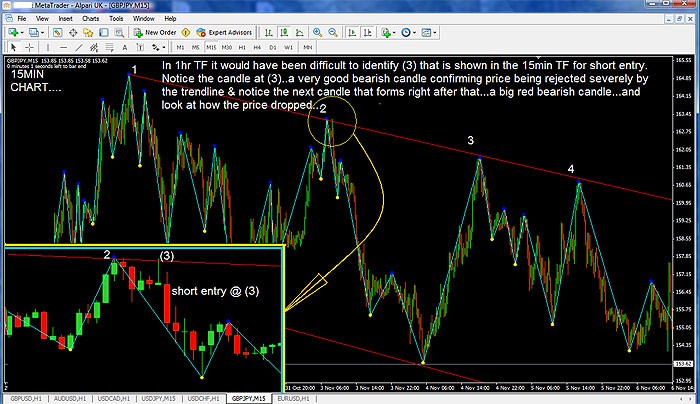Advanced strategy #10 (Trend Line Trading Strategy)
Post on: 16 Март, 2015 No Comment

Submitted by Edward Revy on October 4, 2008 — 08:30.
A truly great work has been done by Myronn. the author of the current Trend Line Trading Strategy.
Support-resistance trading, trend line trading, checking higher time frames, money management the strategy has a concrete-like theory base and a simple implementation a winning combination, that places it into the category of advanced strategies.
Edward Revy
Hello all,
First of all, this site is awesome. Edward, you are a great man.
I have been demoing a simple trading strategy for a week (29th September-3rd of October 2008) and achieved almost 200% return on investment in a week with $5000 account and I would like to share it and it would be great to have many involved in testing this strategy out.
I am calling this a Trend Line Trading Strategy and it is based on:
Following the trend.
Heard & read that before a million times? Lol… I cant blame you. But maybe you can learn something extra here.
Do yourself a favour and take a look at a chart and see if you can identify a trend. Is there a main established trend? It is important that you identify the main trend & once that is identified, your trading decisions are based in the direction of the main trend. There are exceptions where you can go against the main trend, but I wont touch on that here. KISS… KEEP IT SIMPLE & SIMPLE.
TIMEFRAMES:
Timeframes suitable for these strategies are the daily, 4h, 1hr, 30mins.
INDICATOR:
I use only 1 Metatrader4 indicator called Swing ZZ(zz for zigzag). It is freely available in the net, just google it and you can download it. Thanks to the programmer who wrote it. This indicator is helpful simply because you can identify previous swing highs and lows which act as resistance & support levels and I think it is a handy tool to use in this strategy.
So lets get started shall we? I call this trendline trading strategy because it involves drawing trend lines using the swing highs and lows of the Swing ZZ indicator.
SHORT ENTRY RULES:
(a) look at the timeframe you wish to use and identify the main trend. Get the big picture first, that is very important. For me, when I want to trade on the hourly chart, I first check the daily chart and also like to see what is happening in the 4hr chart as well to see if I can spot an obvious trend or channel or congestion happening in the daily and the 4hour charts. I stay out if there is congestion until breakout of the congestion happens and a trend is established. I draw trendlines in the daily or on the 4rhly charts chart then switch to the 1hr timeframe. I identify trends in the hourly and draw trendline(s) as well.
(b) I place a sell stop order, at least 5pips below the LOW of the candle that touches or intersects the trendline. The trendline can be the daily, 4hrly or the 1hr trendline. You must place your order when that candle closes. Why 5 pips? I don’t know, 5 seems like a good number to me… I have five fingers on each arm and similarly for the legs, so 5 is a number I was born with… Put 10 pips if you want. Note you must wait for price to approach a trendline or very near to the trendline before you place your sell stop order.
(c) I prefer to place my stop loss at least 5 pips above the most recent swing high. You should set your stop loss according to your money management calculations and risk tolerance.
(d) I set my profit target just WITHIN the level of previous swing low.
(e) Trade management: as trade moves in my favour, I move my stop loss to at least 5 pips ABOVE each lower subsequent peaks (lower swing highs).
LONG ENTRY RULES:
Just do the exact opposite of short entry.
(1) Set your buy stop order 5 pips ABOVE the high of the candle that intersects the trendline when that candle CLOSES.
(2) I set my stop loss just below the recent low.
(3) I place my profit target WITHIN the level of the previous high.
(4) As trade moves in my favour I move stop loss to at least 5 pips just UNDER each higher subsequent higher swing lows that form.
SHORT ENTRY EXAMPLE:














